What is an antral follicle count and how is it measured?
Understanding Ovarian Reserve Through AFC

A Key Marker in Female Fertility
The assessment of female fertility has advanced significantly, with the antral follicle count (AFC) emerging as a pivotal marker for gauging ovarian reserve and predicting response to fertility treatments. This article explores what AFC is, how it is measured, and its importance in reproductive health.
Defining Antral Follicle Count (AFC)
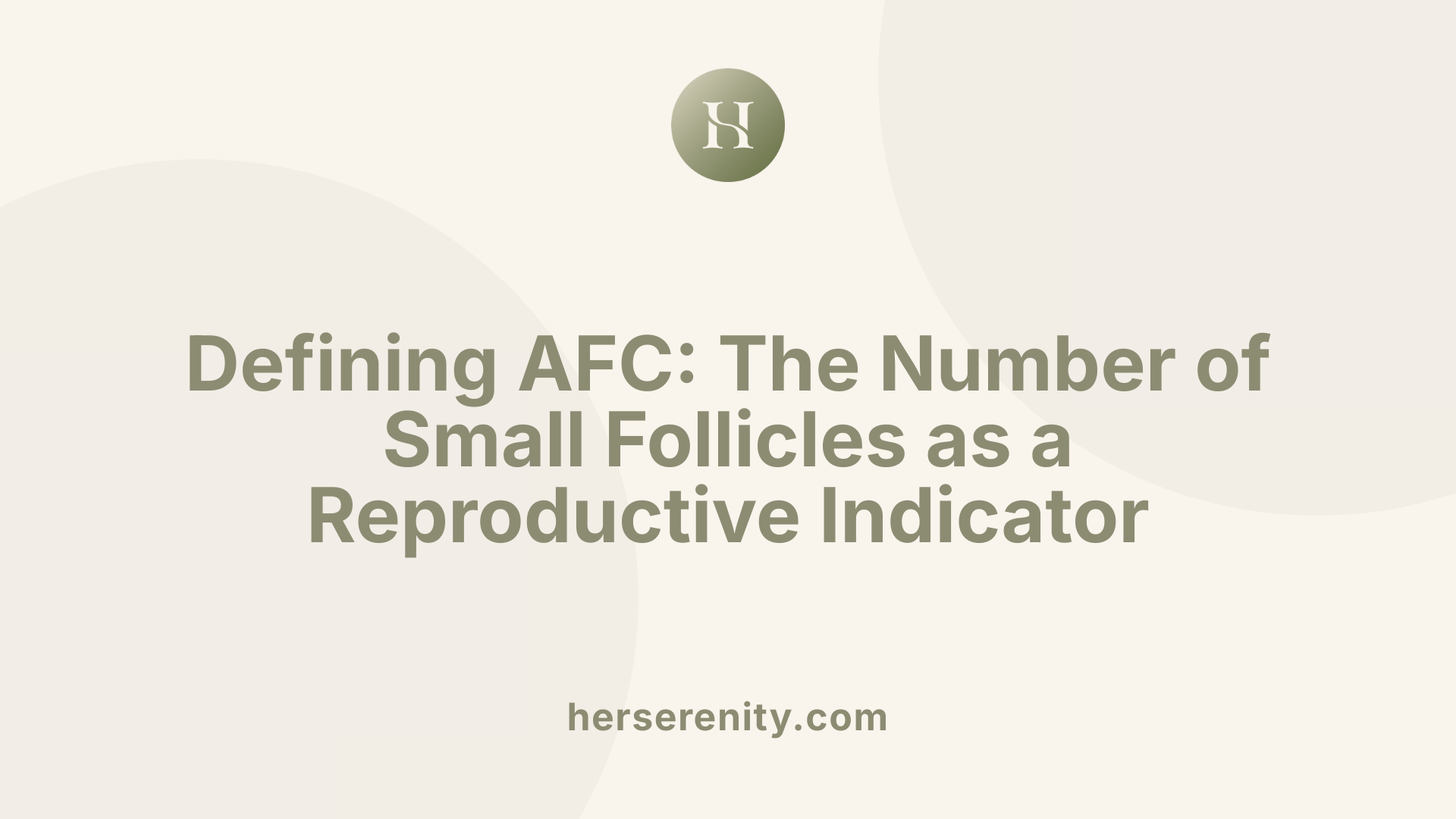
What is an antral follicle count (AFC)?
An antral follicle count (AFC) is a simple test that involves counting the number of small, fluid-filled sacs called antral follicles in a woman's ovaries. These follicles are present early in each menstrual cycle and contain immature eggs, making them valuable markers of ovarian reserve.
Fertility specialists typically perform this count via transvaginal ultrasound on the third day of a woman’s menstrual cycle. During the procedure, the ultrasound probe is inserted into the vagina to visualize the ovaries, where a skilled clinician counts the number of antral follicles, usually measuring between 2-10 mm in diameter.
The AFC indicates how many eggs a woman might have available for fertilization and overall reproductive potential. Higher counts suggest a better ovarian reserve and a more favorable response to fertility treatments like IVF. Conversely, lower counts may signal diminished ovarian reserve, which can be associated with lower chances of pregnancy or a poorer response to ovarian stimulation.
The normal range of AFC varies with age. For women in their 20s and early 30s, typical counts are around 15-35 follicles, while values tend to decline with age—averaging about 6-15 follicles in women over 35. It is important to note that AFC is just one piece of the fertility puzzle and must be interpreted alongside other tests and factors.
AFC can also vary within a cycle and between cycles, but generally, a count of 10-20 follicles is considered normal, indicating good ovarian reserve. Counts less than 10 might be a sign of reduced reserve, whereas counts over 20 could be associated with conditions like Polycystic Ovary Syndrome (PCOS).
Overall, AFC helps predict how well a woman might respond to ovarian stimulation and guides individualized fertility treatment strategies. It is a rapid, non-invasive, and reliable indicator that plays a crucial role in modern reproductive medicine.
Measuring AFC: The Procedure and Technique
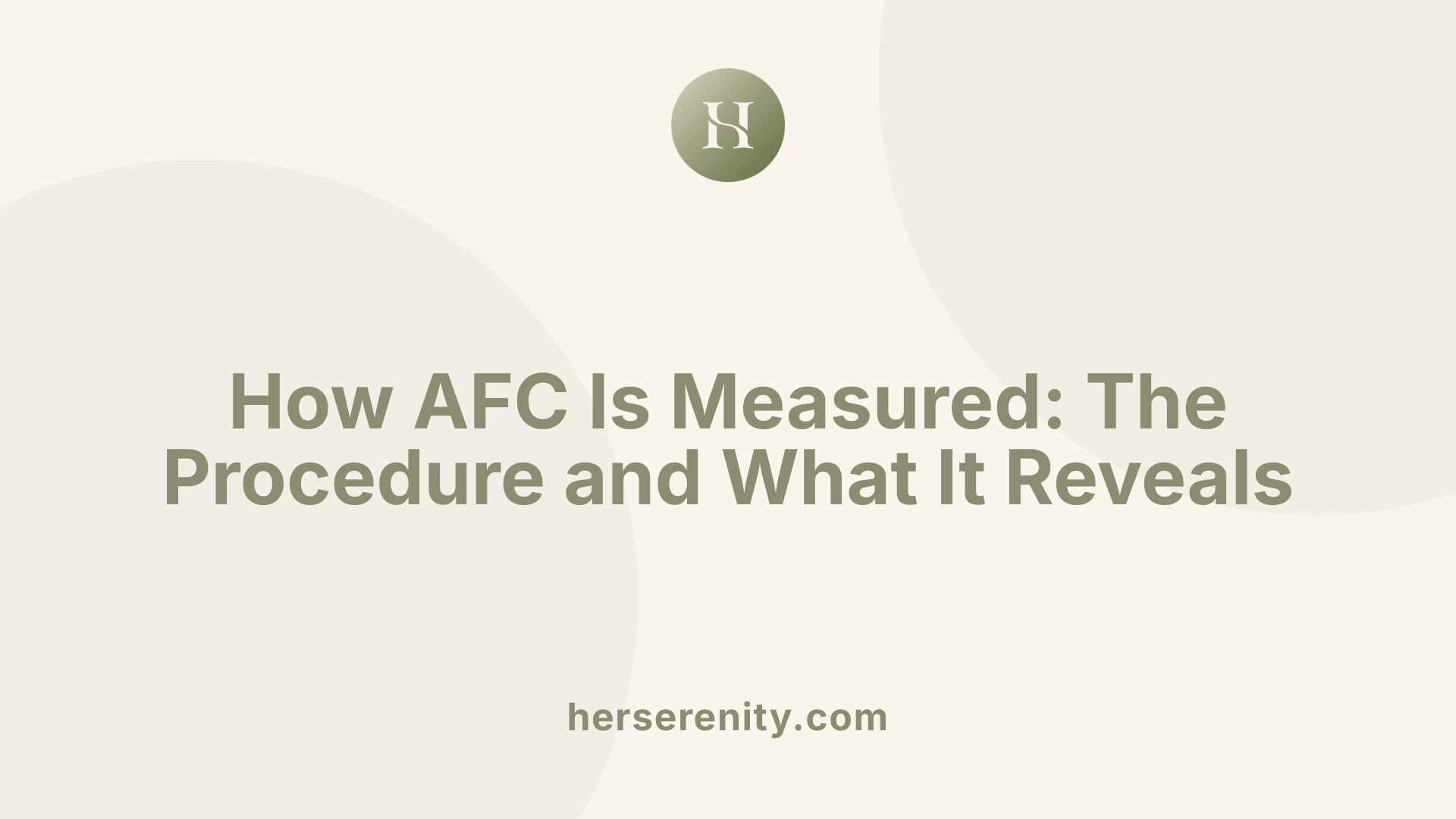
How is an antral follicle count (AFC) measured?
Antral follicle count (AFC) is a crucial step in assessing a woman's ovarian reserve, and it is performed with high precision using transvaginal ultrasound. The timing of the ultrasound is important for accuracy—it is typically scheduled on days 2 to 5 of the menstrual cycle, during the early follicular phase.
During the procedure, a fertility specialist inserts a high-frequency ultrasound probe into the vagina. This transvaginal approach allows close and clear visualization of the ovaries, which are located deep within the pelvis. With accurate imaging, the specialist can detect and count small, fluid-filled sacs called antral follicles in each ovary.
The follicles counted are usually between 2 and 9 millimeters in diameter, fitting within the typical size range for antral follicles. The ultrasound images are used to identify and measure each follicle, and the total number is obtained by adding the counts from both ovaries.
This count gives an estimate of the remaining egg supply and overall fertility potential. A higher AFC generally suggests a greater ovarian reserve, which can be predictive of a better response to fertility treatments such as IVF. Conversely, a lower AFC may indicate diminished ovarian reserve, especially relevant in women of advanced reproductive age.
In summary, measuring AFC involves a timed, minimally invasive ultrasound procedure performed with a transvaginal probe, focusing on follicles within a specific size range during the early days of the menstrual cycle.
The Significance of AFC in Fertility Evaluation
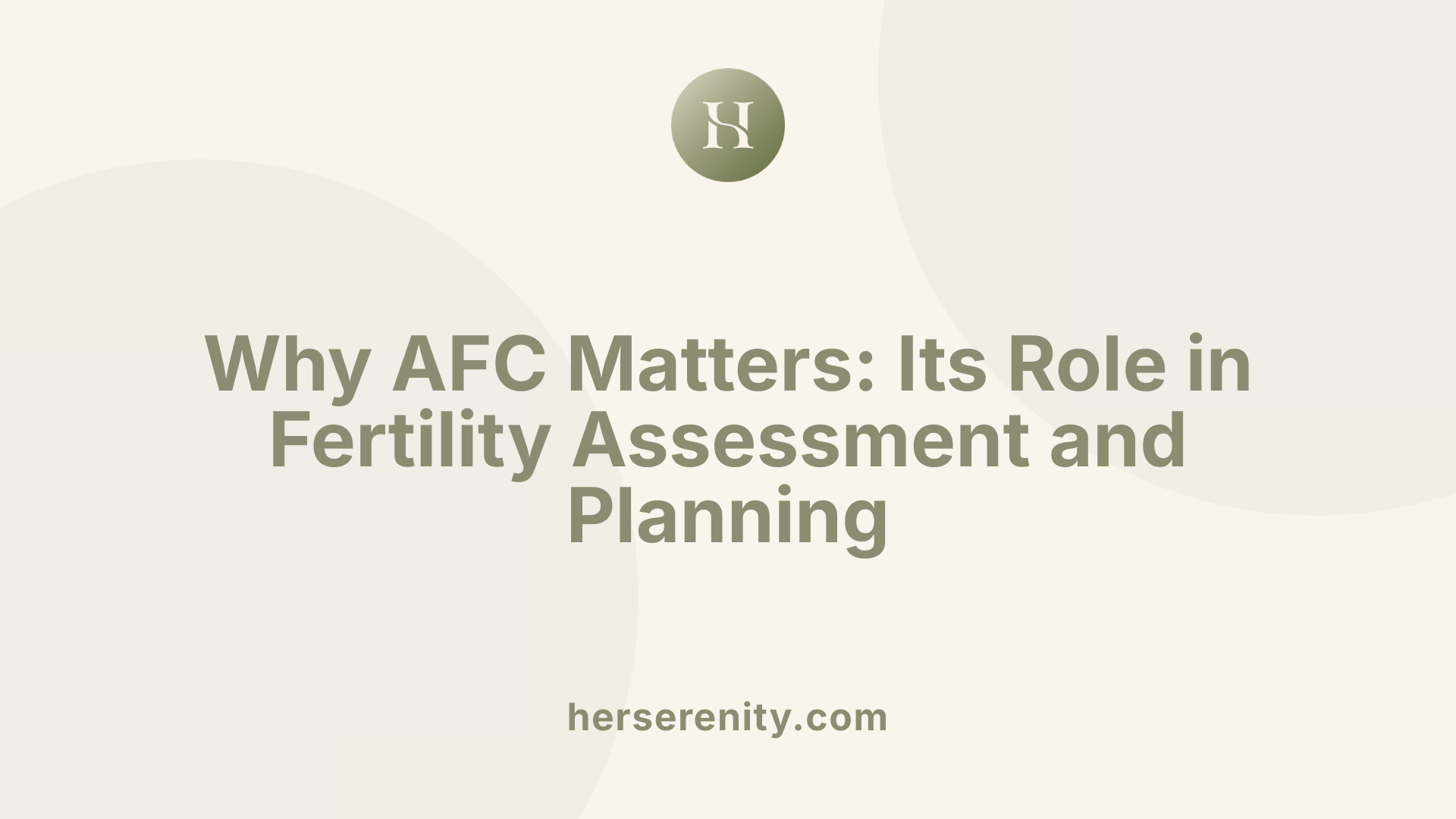
What is the significance of AFC in fertility assessment?
Antral Follicle Count (AFC) plays a crucial role in evaluating a woman’s fertility potential. It involves counting small, fluid-filled sacs called antral follicles in the ovaries using transvaginal ultrasound, typically during the early days of the menstrual cycle.
This count provides an estimate of ovarian reserve—the remaining number of eggs in the ovaries. A higher AFC suggests a robust reserve, which is associated with a better response to ovarian stimulation treatments like IVF. Women with a higher AFC are more likely to produce more eggs during retrieval, increasing their chances of successful fertilization and pregnancy.
Conversely, a low AFC indicates diminished ovarian reserve, which can challenge fertility prospects. While it doesn’t imply outright infertility, it often correlates with poorer response to treatment, lower embryo yield, and potentially lower pregnancy success rates.
AFC is especially valuable because it provides a direct, visual measure of the ovaries’ functional capacity. When used alongside other assessments such as age and hormonal markers like Anti-Müllerian Hormone (AMH) or FSH levels, it offers a comprehensive picture of ovarian health.
In practical terms, AFC helps fertility specialists tailor treatment plans—adjusting medication dosages or deciding on the intensity of ovarian stimulation. It’s also instrumental in predicting response to treatment and planning for fertility preservation options like egg freezing.
Overall, AFC is considered one of the most reliable, accessible tools for estimating ovarian reserve and guiding fertility treatments, significantly impacting fertility prognosis and management decisions.
AFC and Ovarian Reserve: The Relationship
What is the relationship between AFC and ovarian reserve?
Antral follicle count (AFC) is a widely used marker in fertility assessments that reflects the remaining egg supply within a woman's ovaries. Measured during a transvaginal ultrasound, AFC indicates the number of small, resting follicles (antral follicles) around 2 to 10 mm in diameter. A higher AFC suggests a larger pool of developing eggs, which is often associated with a better response to ovarian stimulation in treatments like IVF.
Clinical studies show that women with a higher AFC tend to produce more eggs during stimulation, leading to more embryos and higher chances of pregnancy. Conversely, a low AFC typically indicates diminished ovarian reserve, meaning fewer follicles and eggs available, which might result in poorer responses during fertility treatments, fewer eggs retrieved, and lower success rates.
While AFC is a reliable indicator of the quantity of remaining follicles, it does not directly measure egg quality or predict the outcome of conception. Nonetheless, it provides essential information for fertility planning and treatment personalization. Especially in assisted reproductive procedures, AFC helps predict how well a woman might respond to stimulation, guiding decisions on medication dosing and treatment strategies.
In summary, AFC serves as a crucial clinical tool that correlates strongly with ovarian reserve. It helps assess reproductive potential, especially when combined with other markers such as age and hormone levels, to optimize fertility management. However, it must be viewed as part of a comprehensive fertility assessment rather than a standalone predictor of pregnancy success.
Using AFC for Prognosis and Treatment Strategy
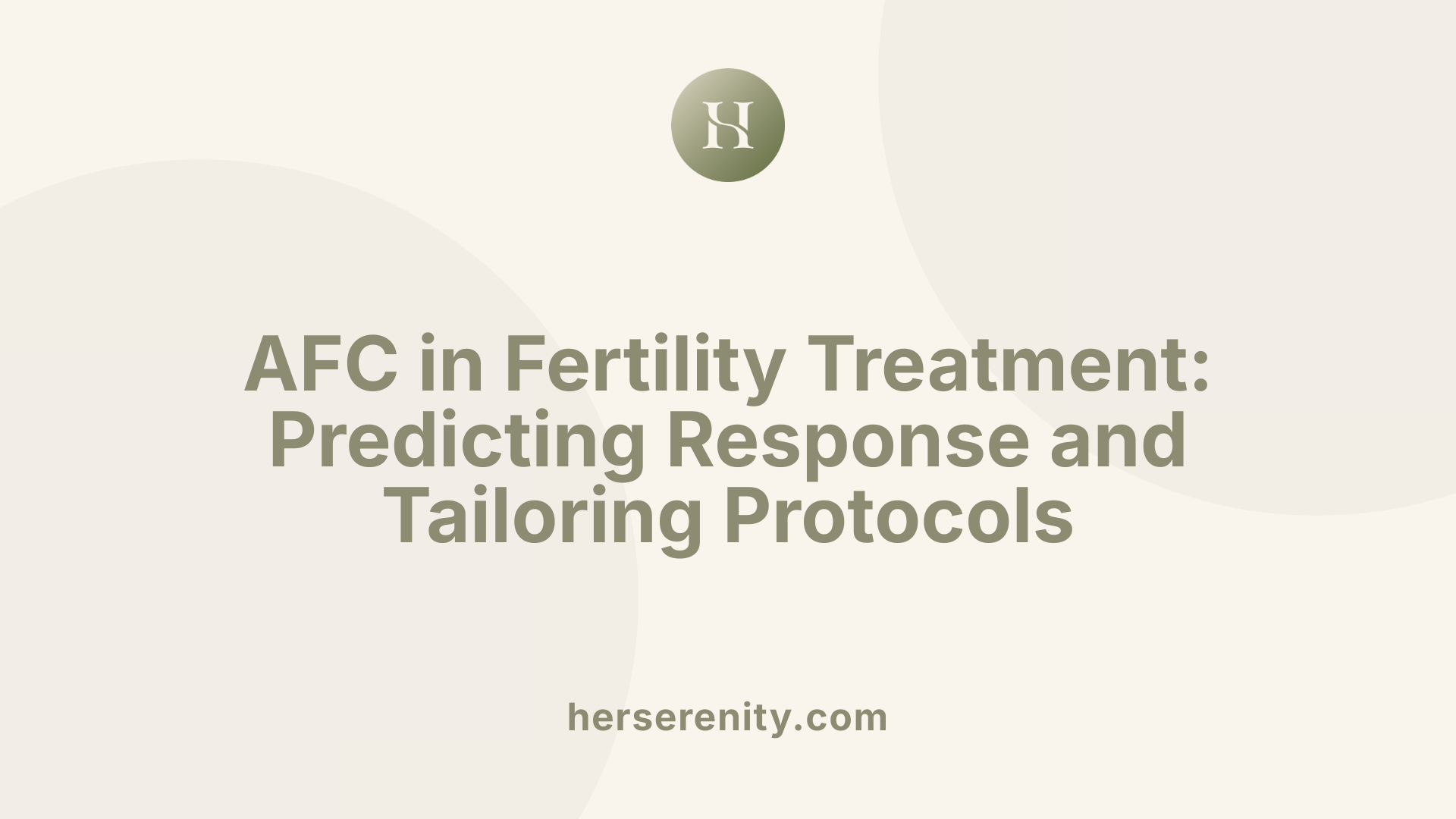
How does AFC inform fertility prognosis and treatment planning?
The Antral Follicle Count (AFC) is a straightforward yet powerful measure used to evaluate a woman’s remaining ovarian reserve. It involves counting the small, fluid-filled sacs called antral follicles that can be seen on transvaginal ultrasound during the early phase of the menstrual cycle. A higher AFC indicates a larger quantity of remaining eggs and a better potential response to fertility treatments like in vitro fertilization (IVF).
Understanding AFC helps fertility specialists tailor treatment approaches to each woman. For instance, if the AFC is high — generally over 20 follicles — physicians may assess a risk of ovarian hyperstimulation syndrome and adjust medication doses accordingly. Conversely, a low AFC suggests diminished ovarian reserve, which can predict a poorer response to ovarian stimulation and fewer eggs retrieved. This insight enables clinicians to modify treatment intensity, optimize medication protocols, and set realistic expectations.
Moreover, AFC assists in comprehensive fertility prognosis. When combined with other tests such as Anti-Müllerian Hormone (AMH) levels and patient age, it provides a clearer picture of reproductive potential. Women with very low AFC may need to consider alternative options such as donor eggs or fertility preservation strategies.
In summary, AFC is vital for personalized fertility planning. It guides decision-making regarding stimulation protocols, anticipates treatment outcomes, and helps facilitate informed counseling about the woman’s fertility prospects. This tailored approach aims to maximize success rates while minimizing risks and emotional strain during fertility treatments.
Predicting treatment response
AFC serves as a reliable predictor of ovarian response during IVF. Women with higher AFC counts tend to produce more eggs when stimulated, increasing the chances of successful fertilization and pregnancy. Conversely, those with fewer antral follicles may experience a limited response, which can influence the number of embryos available for transfer.
In practice, fertility specialists consider a threshold AFC (often around 5-7 follicles) below which the likelihood of poor response increases. This information allows for early adjustments in stimulation medications and protocol planning, improving the efficiency of treatment cycles.
Adjusting ovarian stimulation
Based on AFC measurements, clinicians tailor ovarian stimulation protocols to each patient’s ovarian reserve. Women with high AFC might receive lower doses of gonadotropins to prevent overstimulation, while women with low counts may benefit from higher doses or alternative stimulation techniques.
Such personalized adjustments aim to optimize the number of mature eggs retrieved while reducing side effects and the risk of complications like ovarian hyperstimulation syndrome. This approach enhances the safety and effectiveness of fertility treatments.
| AFC Range | Response Prediction | Treatment Adjustment | Likely Outcome |
|---|---|---|---|
| Less than 4 | Extremely low response, possible cycle cancellation | Increased medication dose, close monitoring | Reduced egg retrieval, lower pregnancy chances |
| 4-9 | Low response | Moderate dosing, individualized stimulation plans | Fewer eggs, limited success prospects |
| 10-20 | Normal response | Standard protocols, close monitoring | Good chances of successful retrieval and pregnancy |
| Over 20 | High response, risk of overstimulation | Lower medication doses, caution against overuse | Increased egg yield, higher pregnancy rates |
In conclusion, AFC is essential not just as a static measure but as a dynamic tool that helps shape personalized and effective fertility treatment plans.
Reproductive Health, Egg Freezing, and the Clinical Relevance of AFC
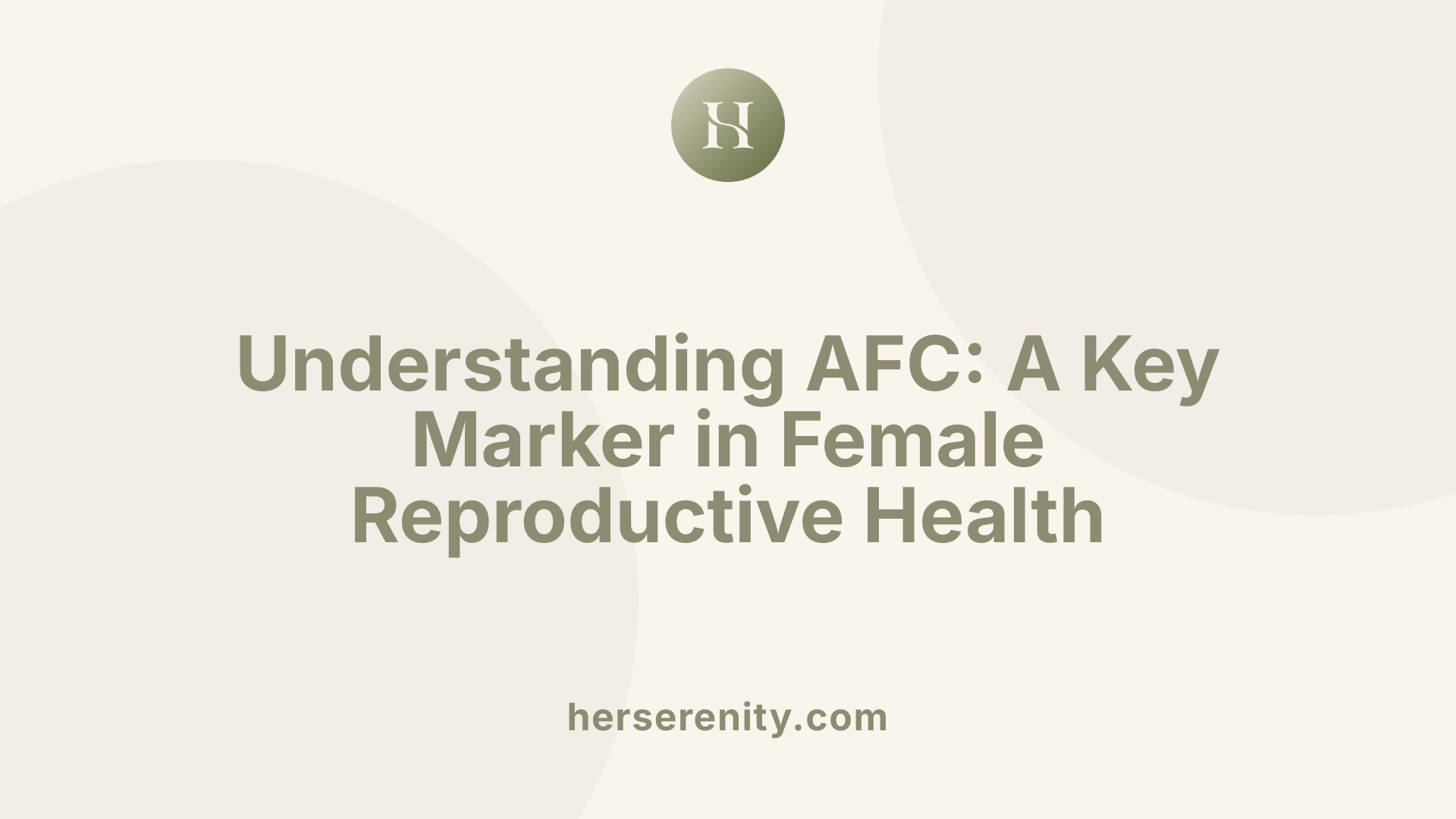
Why is AFC relevant to reproductive health and egg freezing?
Antral Follicle Count (AFC) plays a vital role in understanding a woman’s reproductive capacity. It measures the number of small, fluid-filled sacs called antral follicles present in the ovaries, which contain immature eggs ready to mature. Because AFC provides a real-time snapshot of the ovarian reserve, it helps predict how well a woman might respond to fertility treatments or egg freezing procedures.
In clinical practice, a higher AFC generally indicates a larger supply of remaining eggs, which correlates with a better response to ovarian stimulation. This means more eggs can be retrieved during IVF or egg freezing cycles, increasing the chances of successful fertility preservation or pregnancy.
Conversely, a lower AFC may suggest a reduced ovarian reserve, common in women aging past 35 or with certain reproductive conditions. Knowing this helps clinicians tailor treatment protocols, adjust medication dosages, and set realistic expectations for outcomes.
Fertility preservation relies heavily on AFC to determine optimal timing and feasibility. For women considering egg freezing, a good AFC improves the likelihood of collecting enough mature eggs. It also informs discussions about potential success rates and guides choices about when to pursue fertility treatments.
In summary, AFC is a critical marker in reproductive health. It not only predicts ovarian response but also guides individualized decisions for egg freezing and other fertility interventions, ensuring women receive personalized and effective care based on their ovarian reserve status.
Informed Decisions for Fertility Success
Understanding the measurement and significance of AFC allows women and healthcare providers to make more informed decisions regarding fertility planning and treatment options. As a reliable indicator of ovarian reserve, AFC helps predict how a woman might respond to stimulation, plan for assisted reproduction, or consider fertility preservation strategies. While AFC is a valuable tool, it should be viewed alongside other assessments such as age and hormonal levels to develop a comprehensive fertility profile. Advances in ultrasound imaging and a better understanding of AFC’s implications ensure that women receive personalized care to optimize their reproductive health and achieve their family-building goals.
References
- Antral Follicle Counts, Testing Ovarian Reserve Predicts IVF ...
- Guide to Antral Follicle Count | Utah Fertility Center
- Antral follicle count: What is it? | Access Fertility
- Guide to Antral Follicle Count | Dallas IVF
- Counting ovarian antral follicles by ultrasound: a practical guide
- Antral Follicle Counting Video - Advanced Fertility Center of Chicago
- What exactly is antral follicle count (AFC)? - Cofertility
- Ovarian Reserve Testing: Range, Purpose & Results
- Basal ultrasound scan: antral follicle count to determine ovarian ...



































































































